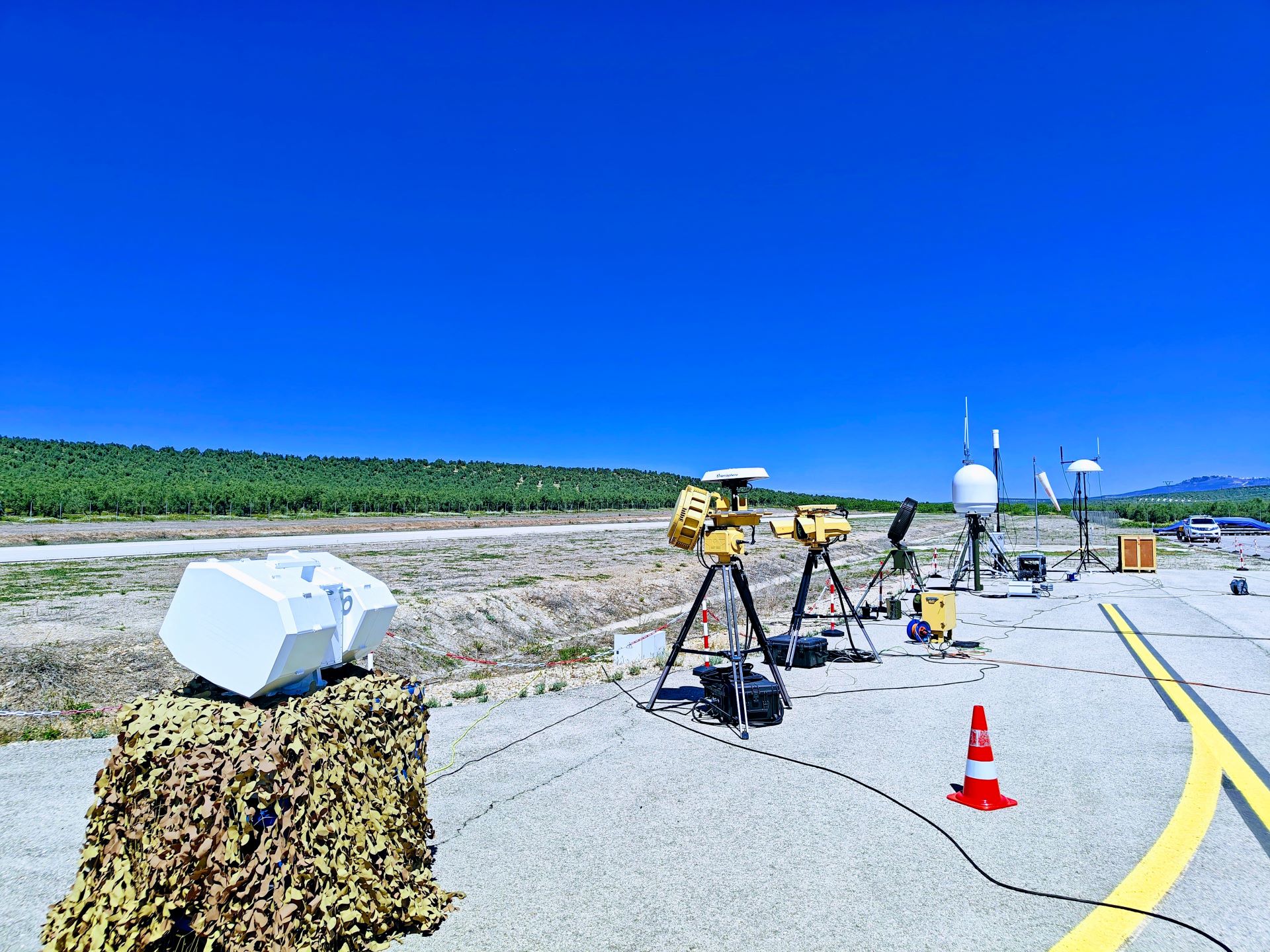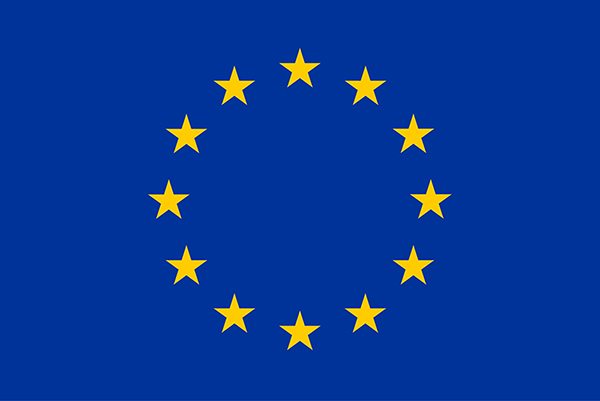
- Loading Mastodon feed...
With the increasing accessibility of Unmanned Aerial Systems (UAS) or drones, law enforcement agencies are faced with the new challenge of regulating access to the lower airspace and mitigating potential threats. To tackle this issue, the European Commission has initiated a communication to the Council and the European Parliament regarding the mitigation of potential threats posed by drones. The main goal of COURAGEOUS² is to assist DG-HOME in implementing this communication. This policy brief outlines specific action points identified by DG-HOME to address the escalating concerns associated with non-cooperative drones.
In order to implement these action points, COURAGEOUS² will leverage the outcomes of the COURAGEOUS project that paved the way towards a standard test methodology for counter-drone systems in order to gain a better common understanding by EU Law Enforcement Agencies of the performance of counter-drone solutions. The COURAGEOUS² project is a direct extension of this former COURAGEOUS project, with a reinforced consortium consisting of not less than 9 Law Enforcement Agencies with relevant operational experience in C-UAS operations from the Netherlands, Spain, Romania, Belgium, Sweden, Finland, Greece, Estonia and INTERPOL, complemented with academic, RTO & private partners with expertise in specific domains of the project.
The project will focus on the following main activities:
- Community building, engaging with end-users, the C-UAS industry and relevant stakeholders through the organisation of regular workshops
- Contributing to a digital platform containing information on drone incidents.
- Implementing a harmonised testing methodology for counter-drone systems, building upon the groundwork laid in the COURAGEOUS project
- Perform a mapping study to identify regulatory needs as an input to drive policies
- Conducting performance tests following the COURAGEOUS protocols of C-UAS systems
- Indexing and leveraging existing counter-drone training modules
- Responsible information sharing to EU LEAs via the CIRCABC portal

Under Construction
Project Publications
2025
- C. Sillero Illanes, T. Rogalski, G. De Cubber, and M. Kowalik, “Case Study of the Drone Ecosystem of Podkarpackie (Poland)," , iss. KJ-01-25-618-EN-N, 2025.
[BibTeX] [Abstract] [Download PDF] [DOI]
This report presents the findings of a review of the Podkarpackie aerial drone and robotics ecosystem, conducted between March 2024 and November 2025 in partnership with the Regional Government of Podkarpackie. The study forms part of REGDUALOSA (Regions, Dual Use, Open Strategic Autonomy), an exploratory initiative of the European Commission’s Joint Research Centre (JRC). It examines policy pathways through which Podkarpackie could strengthen its aerial drone sector as a dual-use industry, thereby enhancing regional competitiveness and contributing to European strategic autonomy. The analysis applies an adapted version of the POINT methodology, combining desk research, expert interviews, and stakeholder consultations. Amid increasing geopolitical instability, the European Commission announced the European Drone Defence Initiative in October 2025, aimed at protecting EU borders and reinforcing defence capabilities under the ReArm Europe initiative, which mobilises up to €800 billion. Bordering Ukraine and hosting a well-established aerospace cluster, Podkarpackie is strategically positioned to advance dual-use innovation. Based on the evidence gathered, the report formulates twelve strategic recommendations to improve governance, funding coordination, SME participation, and skills development. It also introduces the concept of Territorial Preparedness as an innovation policy framework that positions regional ecosystems at the forefront of Europe’s resilience, industrial sovereignty, and long-term security.
@article{JRC143402, number = {KJ-01-25-618-EN-N }, address = {Luxembourg (Luxembourg)}, issn = {1831-9424 }, year = {2025}, author = {Sillero Illanes, C. and Rogalski, T. and De Cubber, G. and Kowalik, M.}, isbn = {978-92-68-34794-2 }, publisher = {Publications Office of the European Union}, abstract = {This report presents the findings of a review of the Podkarpackie aerial drone and robotics ecosystem, conducted between March 2024 and November 2025 in partnership with the Regional Government of Podkarpackie. The study forms part of REGDUALOSA (Regions, Dual Use, Open Strategic Autonomy), an exploratory initiative of the European Commission’s Joint Research Centre (JRC). It examines policy pathways through which Podkarpackie could strengthen its aerial drone sector as a dual-use industry, thereby enhancing regional competitiveness and contributing to European strategic autonomy. The analysis applies an adapted version of the POINT methodology, combining desk research, expert interviews, and stakeholder consultations. Amid increasing geopolitical instability, the European Commission announced the European Drone Defence Initiative in October 2025, aimed at protecting EU borders and reinforcing defence capabilities under the ReArm Europe initiative, which mobilises up to €800 billion. Bordering Ukraine and hosting a well-established aerospace cluster, Podkarpackie is strategically positioned to advance dual-use innovation. Based on the evidence gathered, the report formulates twelve strategic recommendations to improve governance, funding coordination, SME participation, and skills development. It also introduces the concept of Territorial Preparedness as an innovation policy framework that positions regional ecosystems at the forefront of Europe’s resilience, industrial sovereignty, and long-term security.}, title = {Case Study of the Drone Ecosystem of Podkarpackie (Poland)}, url = {https://publications.jrc.ec.europa.eu/repository/bitstream/JRC143402/JRC143402_01.pdf}, doi = {10.2760/26795}, unit= {meca-ras}, project= {COURAGEOUS, COURAGEOUS2, ORIGAMI} } - G. De Cubber and D. Doroftei, “Resource Optimisation for Distributed Teams of Manned Aircraft and Drones," in 2025 11th International Conference on Control, Automation and Robotics, ICCAR 2025, 2025, p. 554–559.
[BibTeX] [Abstract] [Download PDF] [DOI]
With the significant increase in onboard computing capabilities, modern aerial robotic systems, can execute a broad range of perception and control algorithms simultaneously. Moreover, more and more, they are also deployed as heterogeneous collaborative teams, where manned and unmanned assets need to collaborate in a manned-unmanned teaming concept. This introduces the challenge of determining the optimal distribution of cognitive processes across aerial platforms, edge computing nodes, and cloud-based services. In this paper, we propose a novel load distribution methodology tailored to the aerial domain. The approach adopts a decentralized framework for allocating perception and control processes by evaluating communication parameters (e.g., bandwidth, latency, and cost), the computational capabilities of the drones and supporting infrastructure (including CPU, GPU, memory, and storage performance), and the real-time delivery requirements of high-quality output data. The proposed methodology is validated in a simulated environment, demonstrating promising performance and scalability in handling dynamic operational conditions.
@inproceedings{182aea17e9984dd395cb61aeec26ce48, title = "Resource Optimisation for Distributed Teams of Manned Aircraft and Drones", abstract = "With the significant increase in onboard computing capabilities, modern aerial robotic systems, can execute a broad range of perception and control algorithms simultaneously. Moreover, more and more, they are also deployed as heterogeneous collaborative teams, where manned and unmanned assets need to collaborate in a manned-unmanned teaming concept. This introduces the challenge of determining the optimal distribution of cognitive processes across aerial platforms, edge computing nodes, and cloud-based services. In this paper, we propose a novel load distribution methodology tailored to the aerial domain. The approach adopts a decentralized framework for allocating perception and control processes by evaluating communication parameters (e.g., bandwidth, latency, and cost), the computational capabilities of the drones and supporting infrastructure (including CPU, GPU, memory, and storage performance), and the real-time delivery requirements of high-quality output data. The proposed methodology is validated in a simulated environment, demonstrating promising performance and scalability in handling dynamic operational conditions.", keywords = "drones, mannedunmanned teaming, resource optimisation", author = "De Cubber, Geert and Doroftei, Daniela", note = "Publisher Copyright: {textcopyright} 2025 IEEE.; 11th International Conference on Control, Automation and Robotics, ICCAR 2025 ; Conference date: 18-04-2025 Through 20-04-2025", year = "2025", doi = "10.1109/ICCAR64901.2025.11072934", language = "English", pages = "554--559", booktitle = "2025 11th International Conference on Control, Automation and Robotics, ICCAR 2025", publisher = "Institute of Electrical and Electronics Engineers Inc.", edition = "2025", url = "https://ieeexplore.ieee.org/document/11072934", unit= meca-ras, project= {COURAGEOUS2,HADRON,ALPHONSE} }
